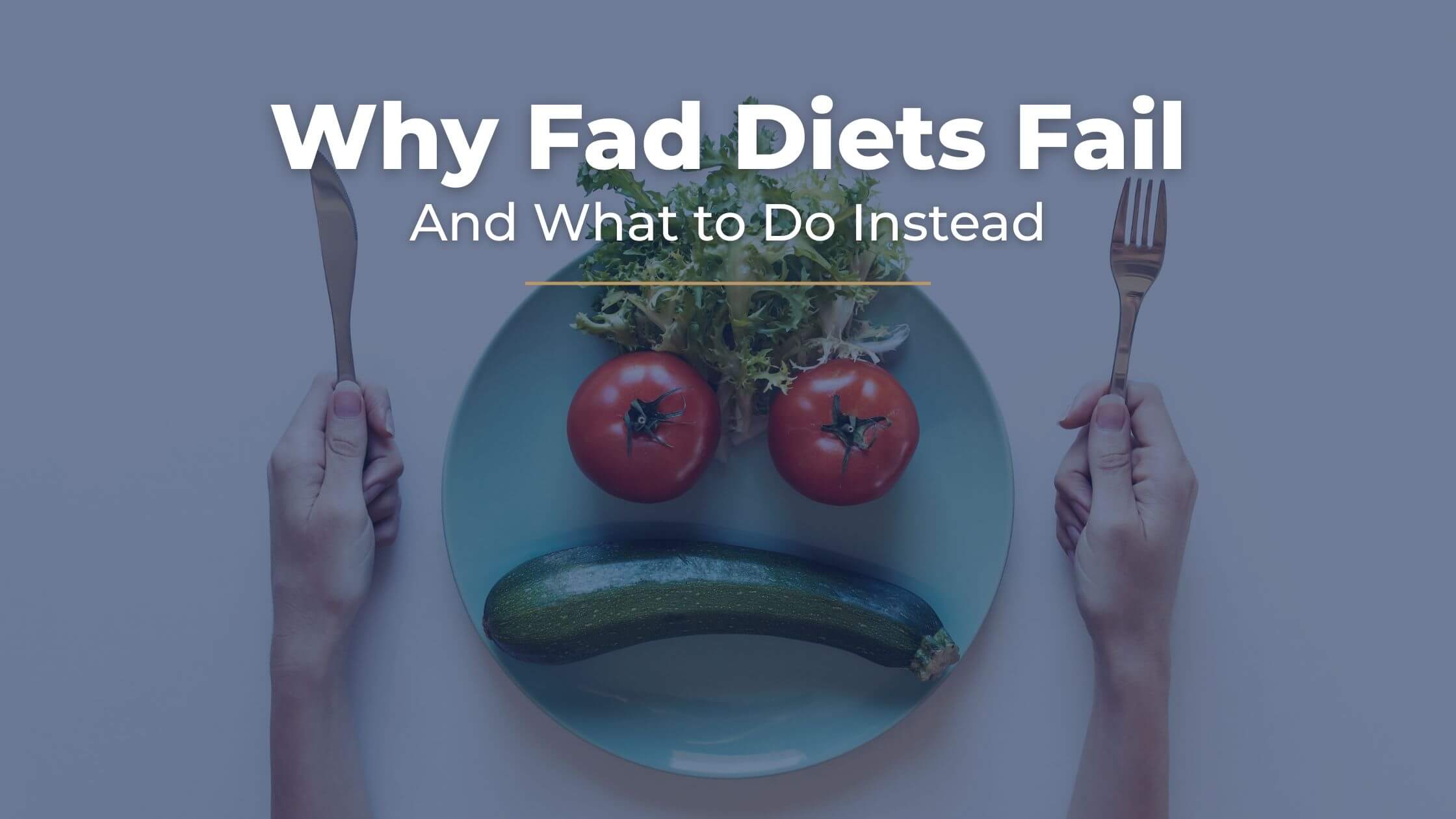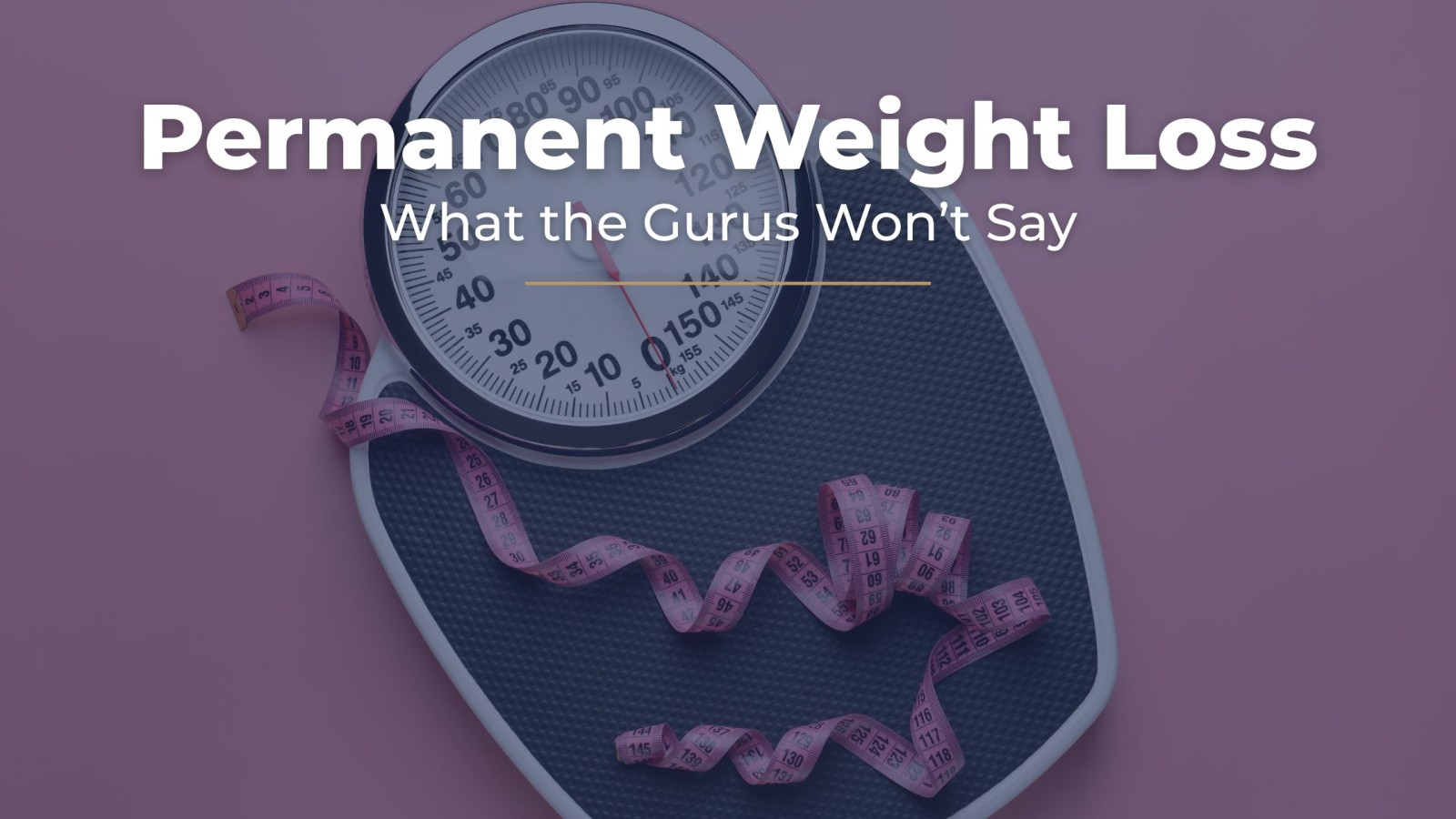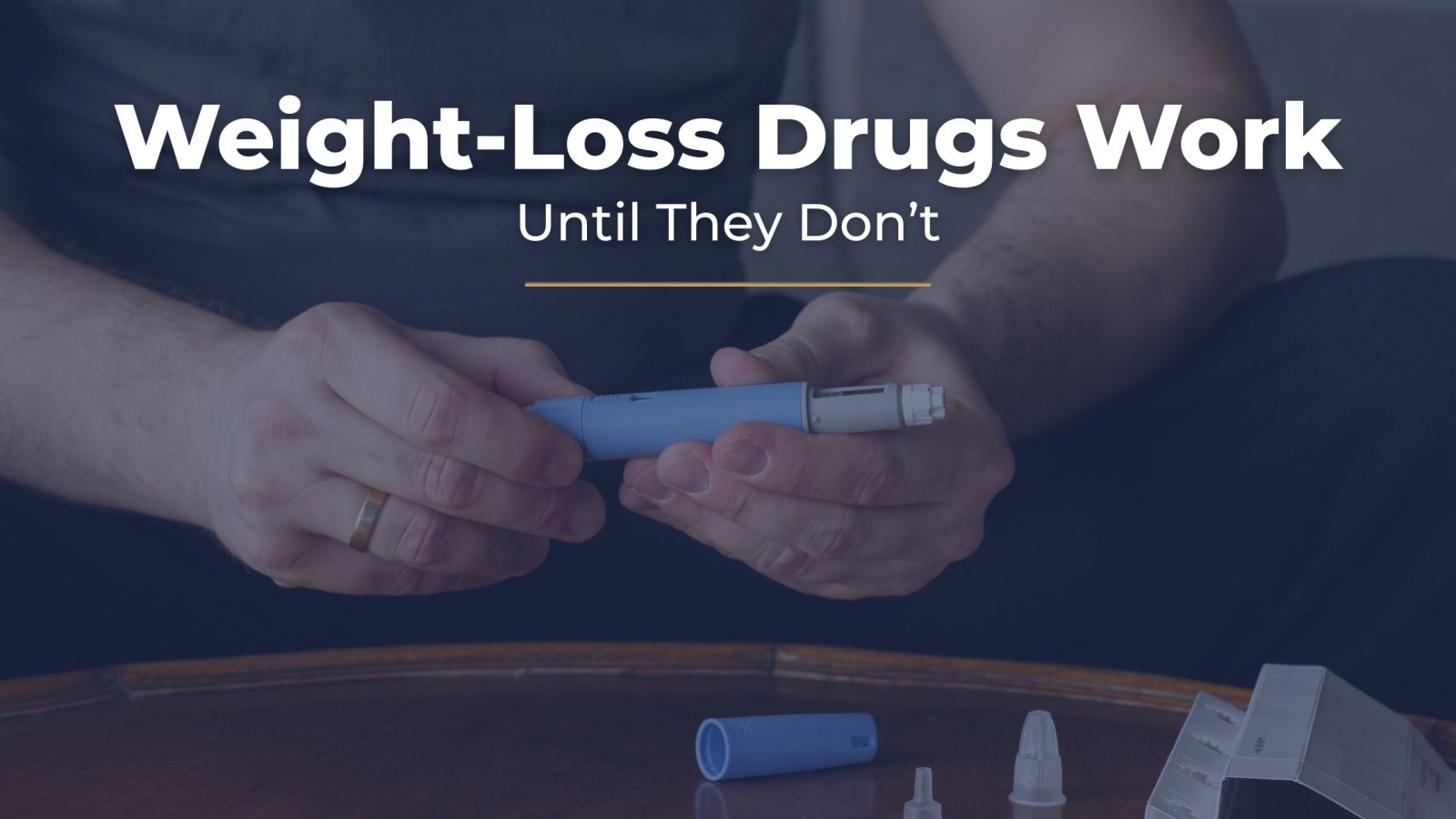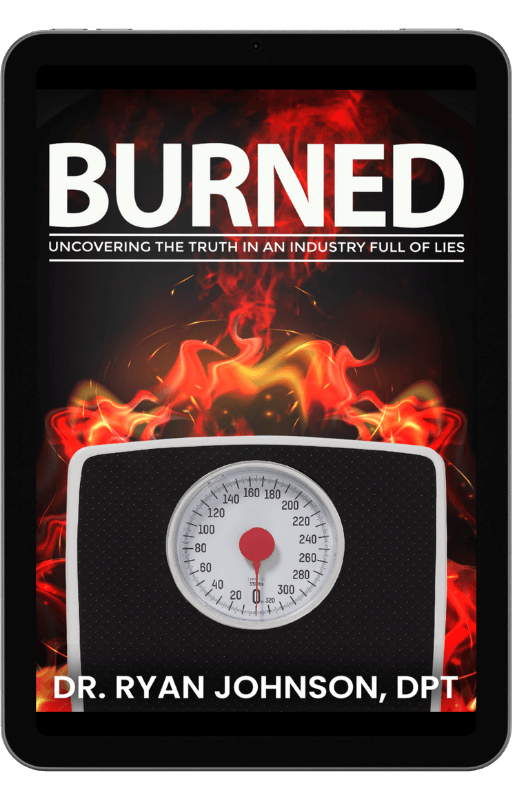
You’ve seen the dramatic before-and-afters of a friend who swears by a new diet. And you wonder: “Should I try it?”
Let's be honest. All of us are naturally drawn to images and stories of dramatic results... especially if we’re told they were fast and easy.
But remember: What happens too fast rarely lasts.
Here’s the truth: Most fad diets implode — with people quitting within days and feeling worse for it. A survey of 2000 adults found they tried 2 diets every year — 126 in their lifetime! And most quit new diets within 6 days.1
Hiding Beneath the Hype
Here's what fad diet promoters don't tell you. In almost every case, they use deceptive sales tactics to exaggerate — or even fabricate — results.
Staged transformations: lighting, angles, filters, editing
Seductive storytelling: inflated claims tied to expensive programs
Actual result: repetitive failure → shame → self-doubt → weight regain
Seductive storytelling: inflated claims tied to expensive programs
Actual result: repetitive failure → shame → self-doubt → weight regain
Promoters cash out. Followers lose hope; then fall for the next fad.
The Diet Spectrum: From Mainstream to Madness
Over the years, dozens of diets have risen and fallen in popularity.
Popular "Mainstream" Diets
- Mediterranean: Plants, whole grains, healthy fats, moderate fish/poultry.
- DASH: Lowers blood pressure with fruits, veggies, low-fat dairy.
- Keto: Very low-carb, high-fat → ketosis.
- Atkins: Low-carb, phased carb return.
- Carnivore: Meat-only, no plant foods.
- Paleo: Ancient-style, avoids processed.
- Zone: 40-30-30 balance of carbs/protein/fat.
- Whole 30: 30-day no processed food.
- South Beach: Low-carb, lean protein, healthy fats.
- Ornish: Very low-fat, plant-based.
- Fruitarian: mostly fruits, nuts, seeds.
- Alkaline: Alkaline-forming foods.
- Body Type: Tailored by body type.
- Raw Food: Uncooked, unprocessed.
Some of those are more balanced and sustainable than others. But many are so restrictive they are destined to fail.
Common Crash Diets
These drastic diets promise dramatic weight loss in days. Because they’re built on deprivation, they leave people worse off than before they started.
- Cabbage Soup: Only cabbage soup.
- Grapefruit: Grapefruit in large amounts at meals.
- Monotrophic: Only one food at a time.
- Juice: Only fruit/vegetable juice.
- HCG: 500 calories + hormone injections/pills.
- Master Cleanse: Lemon juice, maple syrup, cayenne 6-12x/day.
- Cookie: Six diet cookies + one small meal.
- Baby Food: Replace meals/snacks with baby food.
If you think those are extreme, the next group takes things to an even more dangerous — and bizarre — level.
Insane Fringe Diets
- Breatharian: Living only on air and sunlight.
- Cotton Ball: Eating cotton balls soaked in juice/smoothies.
- Tongue Patch: Patch stitched on the tongue to make eating painful.
- Feeding Tube: Liquid diet through a nasal tube.
- Werewolf (Lunar): Juice fast during full/new moon.
- Tapeworm: Swallowing a pill with a tapeworm egg.
These delusional diets grab headlines, but are clearly unsustainable, unsafe, and — in some cases — life-threatening. They highlight the real problem beneath the hype of any fad diet:
👉🏻 They promise a quick fix, that ultimately backfires — leaving dejected dieters more prone to fat gain than before they began.
Not All Diets Are Equal
Some approaches have staying power. Others set you up to fail.
✅ More sustainable: Mediterranean, DASH, MIND — flexible eating patterns, moderate macros, emphasis on what to eat more of.
❌ Harder long-term: strict Keto, Atkins, Paleo, Vegan, Carnivore — eliminating entire food groups/macros. They create rapid early loss, but are nearly impossible to sustain.
How "Food Cults" Hook You
Fad diets often morph into food cults:
- They moralize food (“clean” vs. “unclean”).
- They use fear to control behavior.
- They mix science with pseudoscience to look credible.
- They shame anyone who “breaks the rules.”
Let not the one who abstains pass judgment on the one who eats.
— Romans 14:3
Keto as a Case Study
Keto’s rules (very low carbs, strict ketone monitoring) deliver fast initial results — mainly from cutting entire categories of food. But many later report:
- Gut issues (starves carb-loving healthy microbes)
- High LDL cholesterol (high saturated fat intake)
- Poor performance in intense exercise
- Rebound blood sugar after reintroducing carbs
Keto can be useful for certain medical cases (like epilepsy). But for fat loss, it’s not superior to balanced diets with the same calories and protein.
🧠 Tired of starting over every time a new diet trend hits?
Join my free weekly Body by Ry™ Breakdown — science-based insights that make sense of nutrition and fat loss so you can finally get results that last.
Join my free weekly Body by Ry™ Breakdown — science-based insights that make sense of nutrition and fat loss so you can finally get results that last.
No spam. Unsubscribe anytime.
"Clean Eating Cults", Fear & Orthorexia
Minimizing ultra-processed foods to avoid consuming too many calories and certain questionable ingredients is smart. But catastrophizing (thinking all "fill in the blank" is toxic and/or inherently fattening) is dangerous:
- Fuels anxiety and guilt.
- Can lead to orthorexia nervosa (an unhealthy obsession with food purity).
- Damages your relationship with food and people.
👉🏻 Impurities do not cause obesity or prevent fat loss.
Some data suggests a correlation between certain toxins — particularly during fetal development — and future obesity, yet numerous confounding variables preclude definitive conclusions about their potential contribution. Association doesn't prove causation. So, at this point, any supposed "scientific claims" remain speculative.
If you have a true allergy or intolerance to a food, you should obviously avoid it. Minimizing exposure to proven health-disrupting chemicals is definitely wise.
But, at the end of the day, weight loss still comes down to creating a calorie deficit — eating less than your body burns. And that can be done regardless of your exposure to various impurities.
Why "Eating Better" often works
When you swap out ultra-processed foods for whole or minimally processed options, you naturally eat fewer calories.
Whole foods typically contain less calories (per weight) than ultra-processed foods. They also make you fuller faster and keep you fuller longer. As a result, you don't eat as many calories overall. Together, this tends to create a deficit by default, resulting in weight loss.
But when we start to "eat clean" and lose weight, we assume the cleanliness of the food caused the weight loss. Not true. The reduction in calories did, not “food purity."
All things are lawful for me… but I will not be dominated by anything.
— 1 Cor 6:12
6 Red Flags of a Fad
- Drastic deficits (too much restriction, too fast)
- Disruptive patterns (skipping meals, alternate-day fasting)
- Marginalizing foods (entire food groups banned)
- Complicated rules (overwhelming to follow)
- Time-intensive prep (all cooking from scratch)
- High cost (only organic, or expensive supplement stacks)
Bottom line: The more dramatic the change, the less it can be sustained. If you can’t keep doing it, you won’t keep losing it.
Quick Myths — Busted
“Carbs make me fat.”
No — excess calories make you fat.
No — excess calories make you fat.
“I must eat clean to lose fat.”
Helpful, but not required. Calorie deficits drive fat change.
Helpful, but not required. Calorie deficits drive fat change.
“I regain because my metabolism is broken.”
Regain usually comes from over-restriction → poor adherence → rebound overeating.
Regain usually comes from over-restriction → poor adherence → rebound overeating.
What Works Instead
Here’s what does create lasting results:
- Modest calorie deficit (steady loss, not misery)
- Protein at every meal (20–40g)
- Plants and fiber for fullness
- Strength training 2–3x/week + more daily steps
- 7–9 hours of sleep stabilizes diet compliance
- Flexible structure that adapts to real life
👉🏻 If nothing changes, nothing changes. Delaying change, makes it harder later.
7 Moves To Make This Week
- Set a modest calorie deficit. The right deficit feels doable — not miserable. (In Burned™, I show you how to calculate and adjust it without complicated math.)
- Anchor meals with protein. One of the simplest ways to control hunger and preserve muscle while losing fat. (In Burned™, I show you exactly how much and how to spread it across your day.)
- Add more produce. Aiming for two fist-sized servings of fruit or veggies in most meals helps keep calories in check and adds nutrients. (Chapter 13 of Burned™ explains why this matters more than “eating clean.”)
- Swap one ultra-processed snack for smarter options. Even one switch a day — like fruit plus protein — can stabilize your energy and appetite. (In the book, I break down my top “go-to swaps” that are easy to stick with.)
- Strength train a few times a week. Simple movements like squats, pushes, and pulls are enough to start. (Burned™ walks you through how to progress without hours in the gym.)
- Walk more. Adding steps throughout the day often makes a bigger difference than people realize. (I unpack the compounding effect of daily movement in Chapter 27.)
- Prioritize sleep. A consistent 7–9 hours. Sets the stage for better choices; better food, better workouts, better results. (I explain the fat-sleep connection and how to fix it in Chapter 28.)
Final Word: Fads Fail, Habits Last
At the end of the day, the diet that works best for you is the one you can live with. Fads fail because they demand extremes. Real success comes from flexibility, balance, and consistency.
Key Takeaways
- Fads rely on fear, restriction, and hype; most implode in days.
- Calories drive loss; food quality and protein make it sustainable.
- Flexible food plan + strength/activity + sleep = compounding results.
- The more dramatic the change, the less it can be sustained.
- If you can’t keep doing it, you won’t keep losing it.
Ready to Put The 7 Moves into Action?
Now you know the big picture: sensible deficit, protein, produce, smart swaps, strength, steps, and sleep.
But knowing them isn’t the same as making them stick in real life.
That’s why I wrote Burned™. Inside, you’ll find:
- The calorie deficit sweet spot — no starvation, no confusion.
- Exactly how much protein to eat and how to spread it across meals.
- Simple food swaps that don’t feel like sacrifice.
- A strength + steps framework that works for busy people.
- Tools to finally sleep, recover, and keep the weight coming off.
👉🏻 Ready to stop chasing diets that don’t work?
Get your copy of Burned™ — the no-nonsense, science-based framework that helps you understand your body and create lasting results.
Get your copy of Burned™ — the no-nonsense, science-based framework that helps you understand your body and create lasting results.
References







